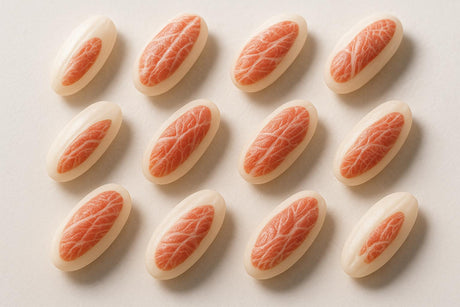In the quest for sustainable food systems amid increasing environmental concerns, cultivated meat is emerging as a transformative solution. This cutting-edge technology, often misunderstood as "fake meat", offers an authentic alternative to conventional meat production, aiming to address the pressing challenges of emissions, ethics, and cultural acceptance. Jim Hake, a bio-physicist from the Open University, unpacks the science, impact, and cultural conversations surrounding cultivated meat. Here’s a deep dive into how this innovation could reshape the way we think about food, sustainability, and ethical consumption.
What Is Cultivated Meat?
Cultivated meat, sometimes referred to as lab-grown meat, is not an imitation like soy-based burgers or plant-based patties. Instead, it is actual meat grown directly from animal cells in a controlled environment, bypassing the need for traditional livestock farming. The process involves cultivating muscle cells, fat, and collagen in bioreactors to produce a product indistinguishable from conventional meat in texture, taste, and nutritional value.
The key difference lies in how it is produced. Unlike raising animals, cultivated meat requires only a small biopsy from a living animal or cells sourced from a fertilised egg. These cells are then grown in optimal conditions, eliminating the need for slaughter and significantly reducing resource demands and greenhouse gas emissions. As Hake aptly puts it, "You’re not growing anything you don’t want, like bones - just the meaty bit."
The Environmental Case: Reducing Emissions
One of the most compelling arguments for cultivated meat is its potential to combat climate change. Traditional livestock farming is a significant contributor to greenhouse gas emissions, particularly methane from ruminants like cows. Hake presented a comparative graph illustrating emissions per 100 grams of protein, with beef topping the chart as one of the most carbon-intensive protein sources.
In contrast, cultivated meat currently sits in the middle range of emissions but has the potential to become much more efficient as technologies advance. By using renewable energy to power bioreactors and optimising growth processes, the emissions from cultivated meat could drop even further. Hake highlighted the unique efficiency of cultivated meat production: "You’re not growing a whole animal that needs to roam or digest food; you’re just growing the parts you want."
Encouragingly, cultivated meat joins plant-based protein sources like pulses and nuts in offering a sustainable alternative to high-emission animal agriculture. For environmentally conscious individuals who find it difficult to give up meat entirely, lab-grown options present a pragmatic middle ground.
Ethical Dilemmas: Where Do the Cells Come From?
While cultivated meat solves some environmental and welfare concerns, it raises new ethical questions. Hake identified three primary methods for sourcing cells, each with unique implications:
- Biopsies from Live Animals: This involves taking a small, harmless tissue sample from an animal, who continues to live unharmed. This method is often seen as the most ethical.
- Fertilised Eggs: Early-stage embryos contain pluripotent stem cells, capable of becoming any type of cell. Chicken-derived products often use this method, which could be contentious for vegetarians or religious groups abstaining from eggs.
- Slaughtered Animals: Although theoretically possible, sourcing cells post-slaughter raises ethical concerns and contradicts the goal of cruelty-free meat alternatives.
For long-term vegetarians or those leaning towards veganism, such as Hake himself, the source of the cells is a critical consideration. Beyond personal ethics, cultural and religious acceptance also plays a significant role. For example, would cultivated pork from a biopsy be acceptable within Islam or Judaism? Similarly, could lab-grown beef align with the dietary restrictions of Hinduism? These questions require input from religious leaders and cultural stakeholders to inform the development of inclusive food practices.
Cultural and Religious Responses
The introduction of cultivated meat intersects with deeply held beliefs about food’s sacredness, as noted by Maria, another researcher involved in sustainable food studies. Cultural contexts heavily influence how such innovations are received. For instance, in Romania, a predominately meat-centric culture, suggesting veganism at significant holidays like Christmas could be met with resistance. However, cultivated meat might bridge the gap, offering a sustainable yet familiar option.
Maria’s reflections also raised broader questions about how societies can engage with the ethical challenges of new food technologies. Drawing on art-based reflection methods like mini-pilgrimages, Maria suggests that taking time to connect with nature and contemplate our food choices could help address the scepticism surrounding lab-grown meat. Religious pilgrimages, a common practice across faiths, could similarly serve as a framework for engaging communities in meaningful dialogue about sustainability and ethical consumption.
Challenges and the Road Ahead
Despite its promise, cultivated meat faces significant hurdles. From the high costs of production to regulatory approval and consumer acceptance, there is still a long way to go before it becomes a mainstream option. Furthermore, ethical questions about cell sourcing and potential cultural resistance must be navigated carefully to ensure that this innovation is accessible and acceptable to diverse populations.
Technological advancements, such as computational modelling and machine learning, are playing a role in overcoming some of these challenges. Scientists are using these tools to optimise growth conditions, improve texture, and reduce resource use, bringing cultivated meat closer to its sustainability potential.
As Hake succinctly concluded, "Cultivated meat might be useful for reducing carbon dioxide emissions." However, its broader success will depend on ongoing collaboration between scientists, ethicists, cultural leaders, and policymakers.
Key Takeaways
- Cultivated Meat Defined: Unlike plant-based alternatives, cultivated meat is real meat grown from animal cells in a bioreactor.
- Environmental Benefits: Potential to drastically reduce greenhouse gas emissions compared to traditional livestock farming.
- Ethical Sourcing: Three methods include biopsies from live animals, fertilised eggs, and (controversially) slaughtered animals.
- Cultural Acceptance: Religious and cultural attitudes towards cell sourcing could influence acceptance.
- Technological Advancements: Computational modelling and machine learning are driving improvements in sustainability and product quality.
- A Pragmatic Alternative: Cultivated meat could serve as a middle ground for flexitarians and meat reducers seeking sustainable options.
- Room for Reflection: Engaging communities through art and reflective practices may help address ethical concerns and foster acceptance.
Final Thoughts
Cultivated meat represents a promising solution to some of the world’s most pressing environmental and ethical challenges. While it won’t replace agricultural traditions overnight, its potential to reduce emissions and provide cruelty-free meat alternatives makes it a critical innovation to watch. By continuing to engage in thoughtful dialogue and addressing cultural and ethical concerns, we can pave the way for a more sustainable and inclusive food system.
As we venture into this new frontier of food production, one thing is clear: the future of meat is no longer confined to the farm - it might just be in a bioreactor, growing towards a greener tomorrow.
Source: "Dr. Maria Nita & Dr Jim Hague – 'Cultural dialogue on Cultivated Meat'" - INFORM Religion, YouTube, Aug 11, 2025 - https://www.youtube.com/watch?v=wXCNrO59Jk0
Use: Embedded for reference. Brief quotes used for commentary/review.













